Basketball drills
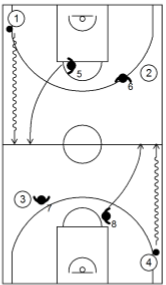
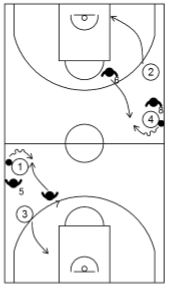
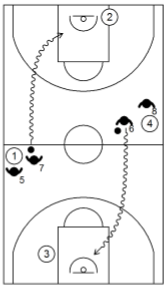
Requirements:
players must be able to individually defend the man with the ball Â- players must be able to dribble
Objective:
Force the dribbler to make a reverse dribble at the sideline and second defender goes for the steal.
Organization:
- 2 against 2 across the length
- losers must defend in the next round
- the trapper anticipates the reverse of the dribbler and taps the ball away as soon as the dribbler has turned 180 degrees Â- completes the lay up on the other basket
- a steal is 3 points Â- a 'normal score' by the attackers is 1 Â- the pair that has 12 points first wins Â- losers walk suicide
Teaching Points:
defender forces dribbler to the side, but must keep an appropriate distance, taking into account the dexterity and speed of the dribbler Â- defender must force the dribbler to the side so that he will make a reverse dribble
Variations:
- left and right
- with triplets half court; third defender must release his own man as soon as the attempted steal begins and cut off passing lines
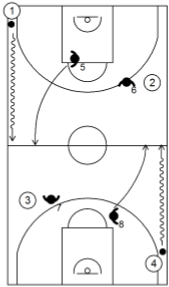
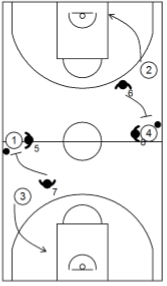
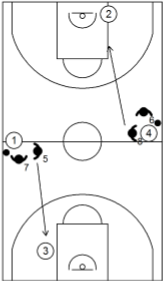
Requirements:
players must be able to individually defend the man with the ball Â- players must be able to dribble
Objective:
Set up kick directly over the center line.
Organization:
2 against 2 across the longitudinal half Â- losers must defend in the next round Â- the dribbler must be over the centre line within 4 seconds (the trapper counts down)
the trapper moves aggressively towards the half way line just before the dribbler crosses it (but due to his speed and the position of his defender is not able to change direction) Â- the trapper widens himself, but moves the foot closest to the touchline backwards slightly, so that he can close the touchline with 1 or 2 slides Â- the dribbler must never pass between the two defenders
As soon as the dribbler grabs the ball, the trapper stays with it Â- the other defender sprints towards the free attacker
Teaching Points:
defender forces the dribbler to the side, but must keep an appropriate distance, taking into account the dexterity and speed of the dribbler Â- defender must force the dribbler to move at high speed along the touchline to the attacking half
Variations:
left and right
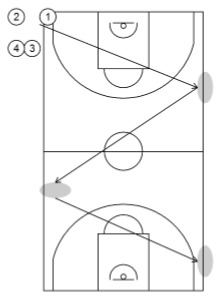
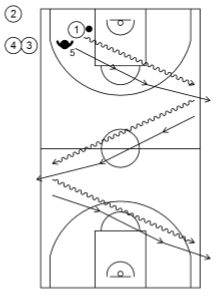
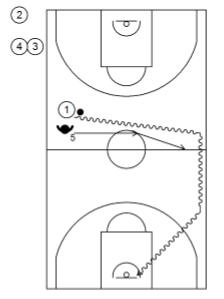
Requirements:
Players must be able to sprint and slide and switch between them Â- Players must be able to dribble
Goal: Press
the dribbler on the press
Organisation:
Have each player sprint fully along the drawn lines and always close off the touchline (set up cones) idem but now with slides idem with alternating slides - sprint - slides Â- attacker without ball. Defender must make slides as long as possible; sprint if necessary Â- defender must close off the sideline in any case Â- same with ball. Defender forces attacker to turn on the sideline Â- keep exercise short and intense
Teaching points:
defender should get as close to attacker as possible, taking into account dexterity and speed of dribbler Â- defender should close off sideline with foot, forcing dribbler to turn Â- defender should accelerate, get in front of dribbler before closing sideline
Form of play:
if the dribbler manages to dribble between the sideline and the defender, then he may score Â- defender then continues to defend Â- if the defender manages to make the attacker turn at the sideline then he may then dribble and the attacker becomes defender
Tips:
start with a weak dribbler and let him start with his weak hand Â- impose restrictions on the attacker in the beginning: he can only change speed, but not direction, except on the touchline Â- reduce the restrictions as the defenders get better
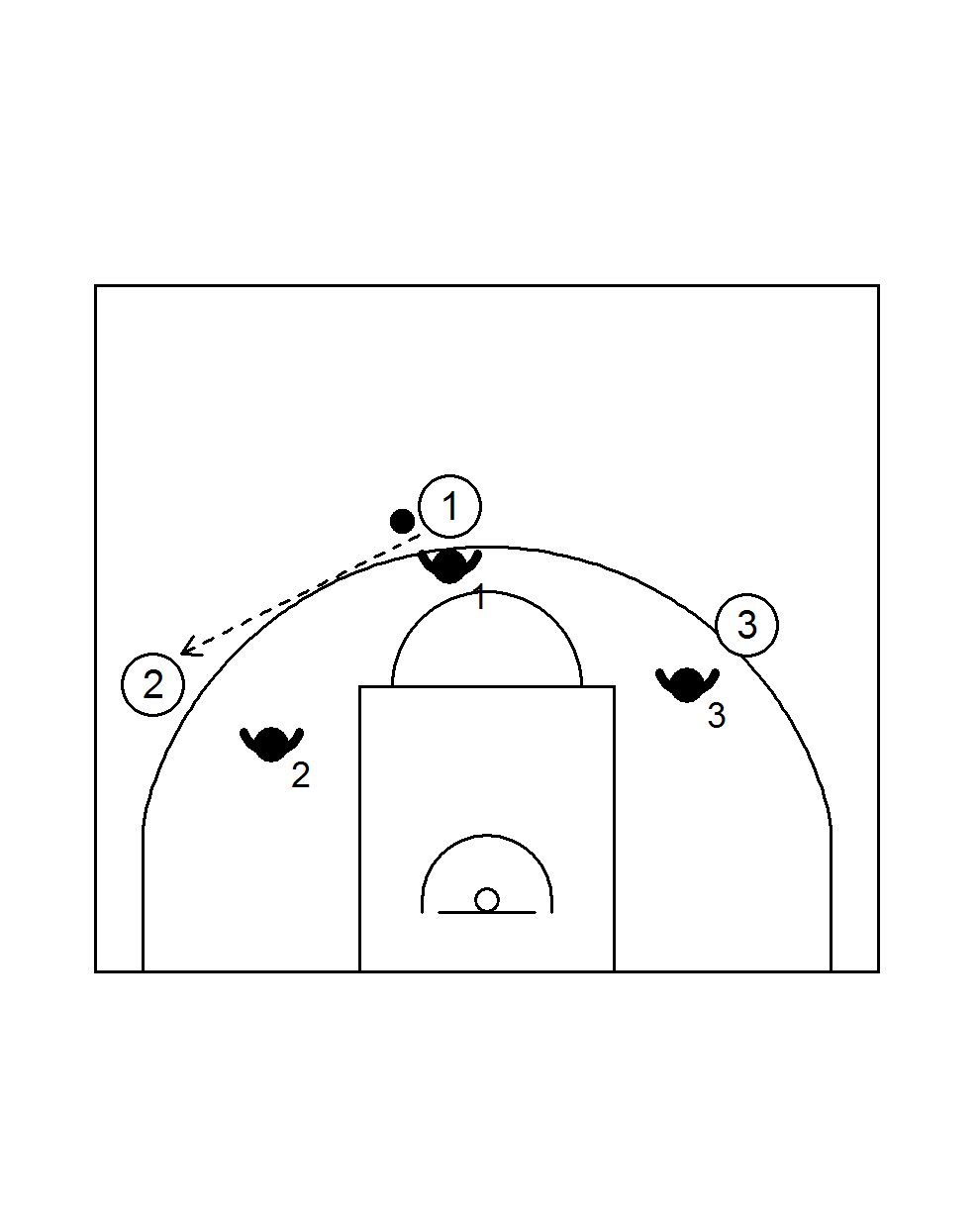
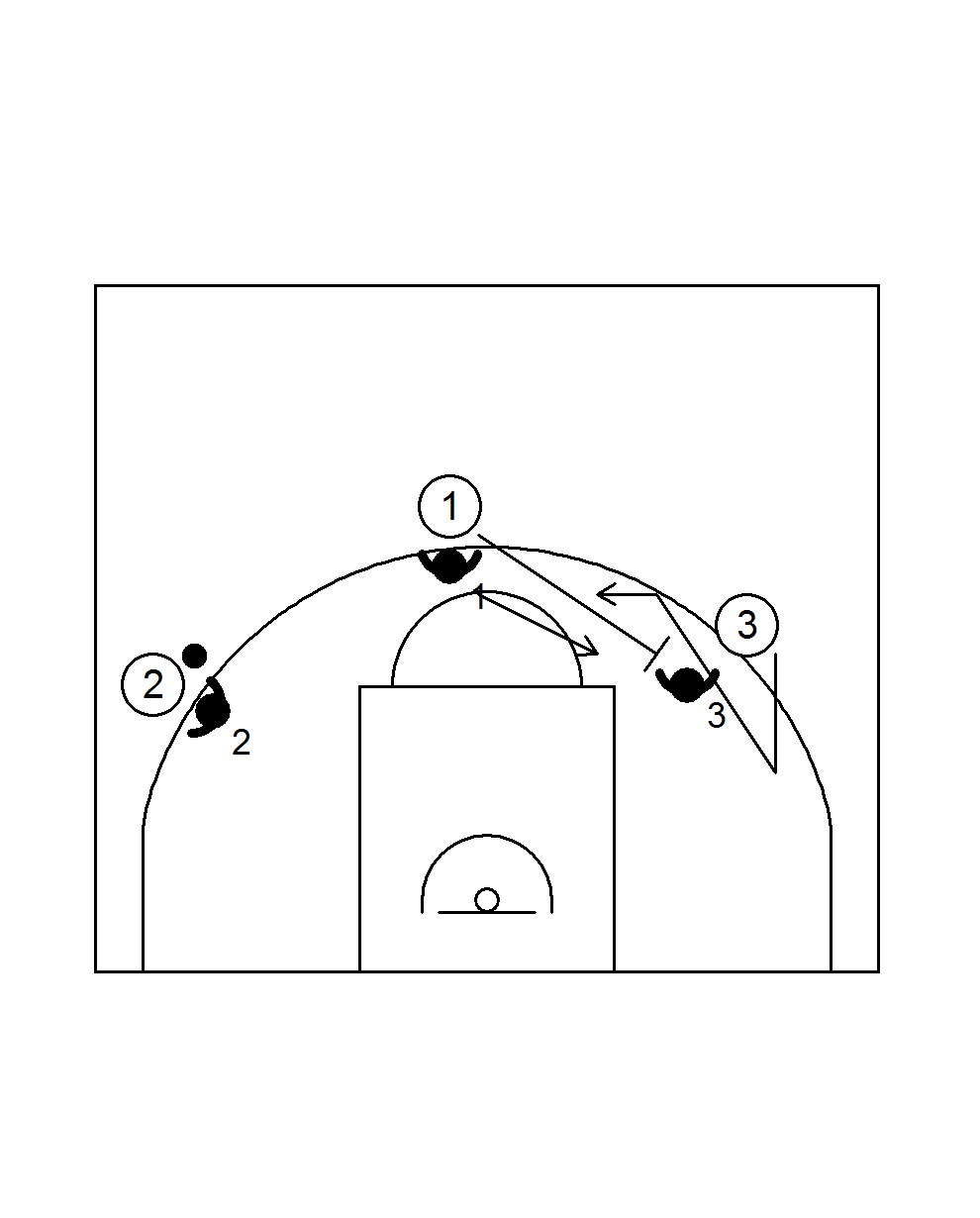
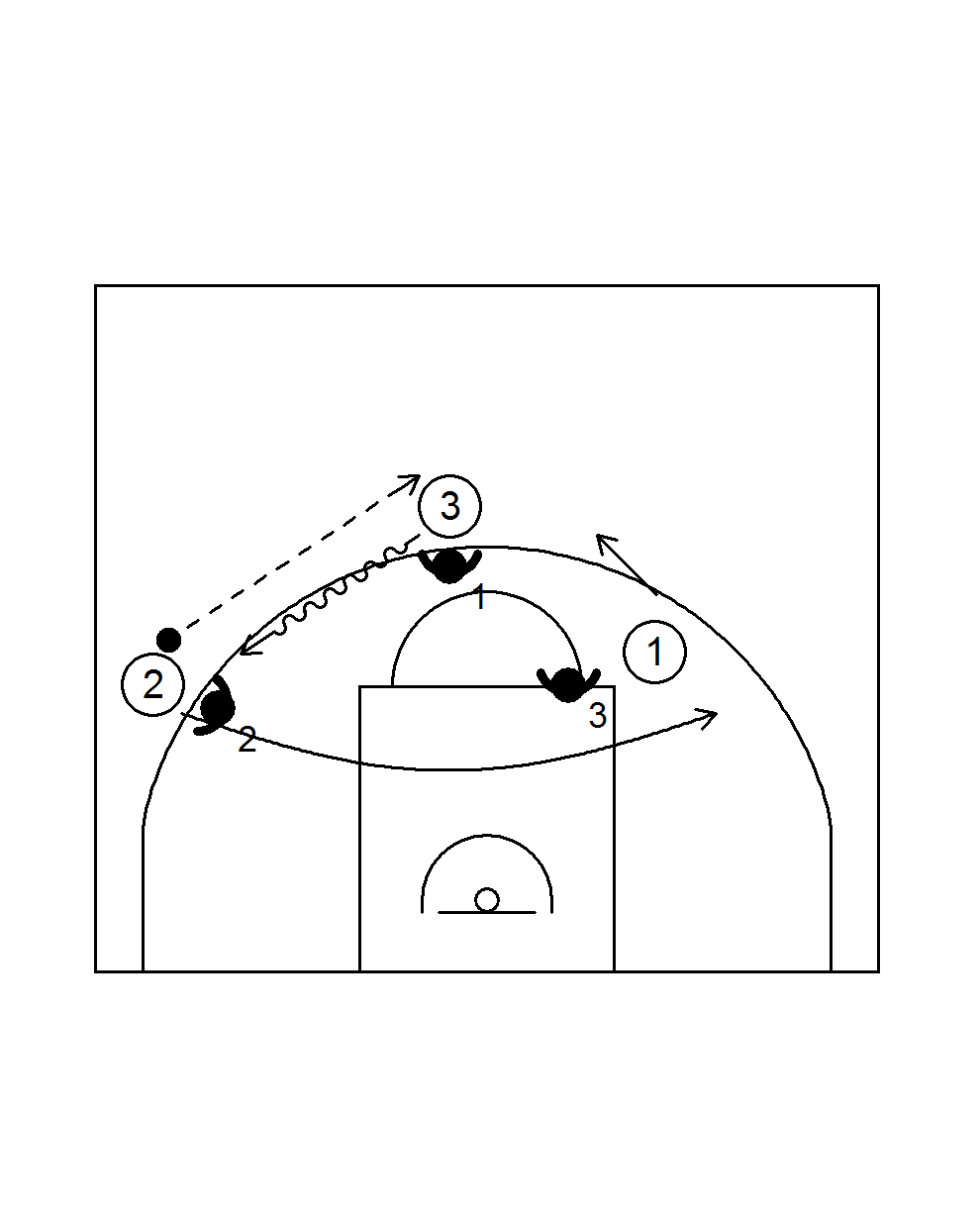
Requirements:
- players must be able to drive and shoot individually from the 3-point line
- be able to screen
Goal:
keepperimeter
players moving while making good use of space on the court
Organization:
- the attackers get free with in-out, pass and screen away, back through, cut in etc
- always make sure there is about 3 metres space between the attackers
- the player who receives the pass turns with a front or reverse pivot towards the basket.
- by constant movement and changes of position they try to create space for a shot or drive
- a player in the three-point zone can only be played if he can score immediately
Dribbling only to:
- restore space between the attackers
- Finish a lay up
- obtain a position to pass
- get out of trouble
Teaching Points:
- look at your team-mates and react accordingly
- As soon as you have the ball, face the basket
- Dribble only with a clear goal
- always recover 3 metres of space after a running action or a screen.
Example:
- 2 passes back to 3 and tries to cut in front of his man to the basket
- 3 cannot make the pass due to good defensive work
- 3 dribbles to the forward position to redistribute the space.
- 1 takes the safety guard position
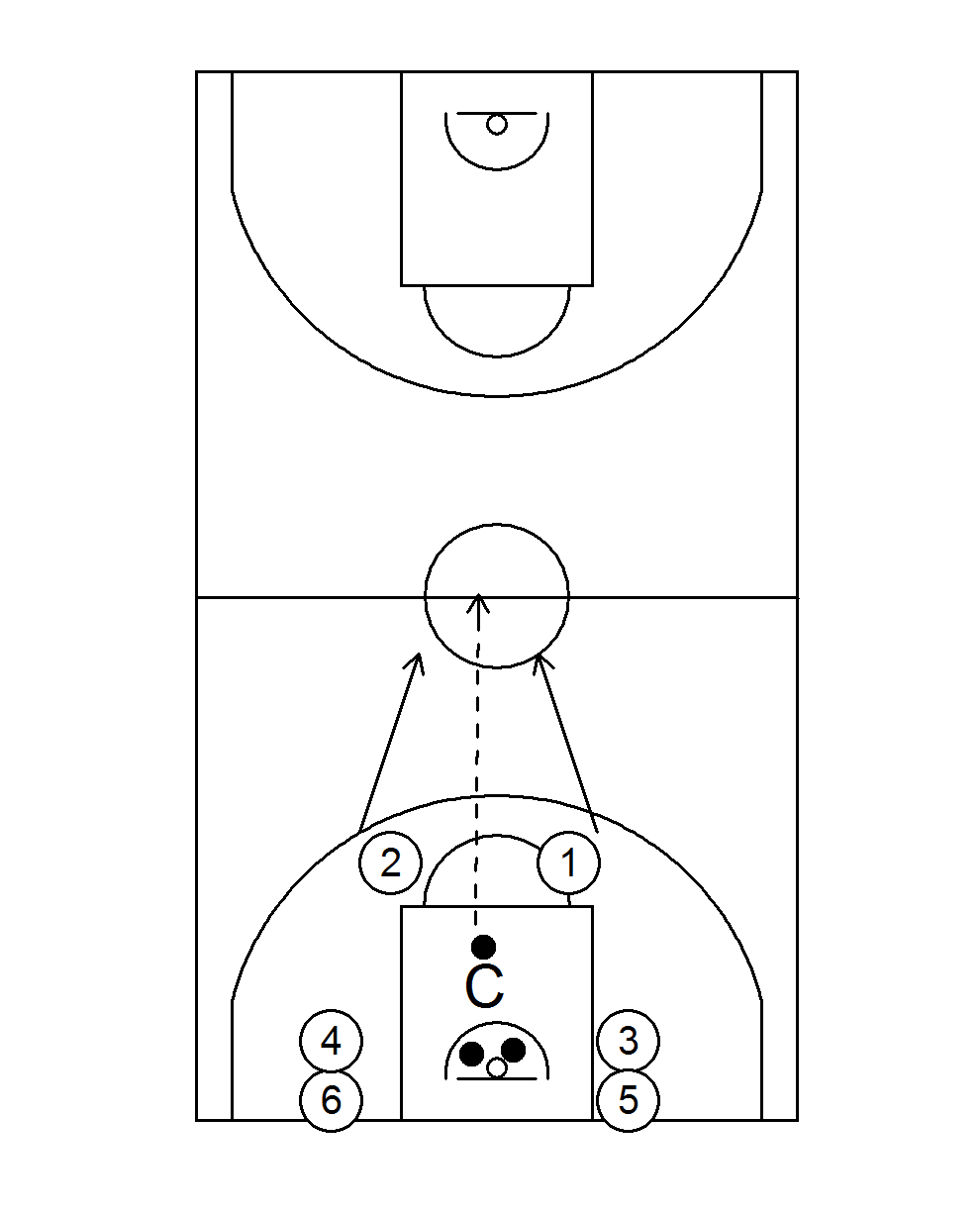
Requirements:
players must master the layup at full speed
Goal:
reactquickly
to a stray ball and be able to finish the next 1 on 1
Organisation:
- the coach stands in the middle of the bucket and has the ball
- Two players on the elbow are only allowed to look straight ahead.
- trainer passes between the players
- they may only move when they see the ball
- the player who captures the ball scores on the opposite basket
- the other player tries to prevent this
- the coach makes his passes so hard that the players have to sprint to keep the ball in.
- n.b. the defender must not make any mistakes due to the risk of injuries
Teaching points:
- speed of action
- do not let the defender distract you
Variations:
- have players start sitting or lying down
- Put two players next to each other on the elbow, or with their backs against each other. Then play 2 against 2
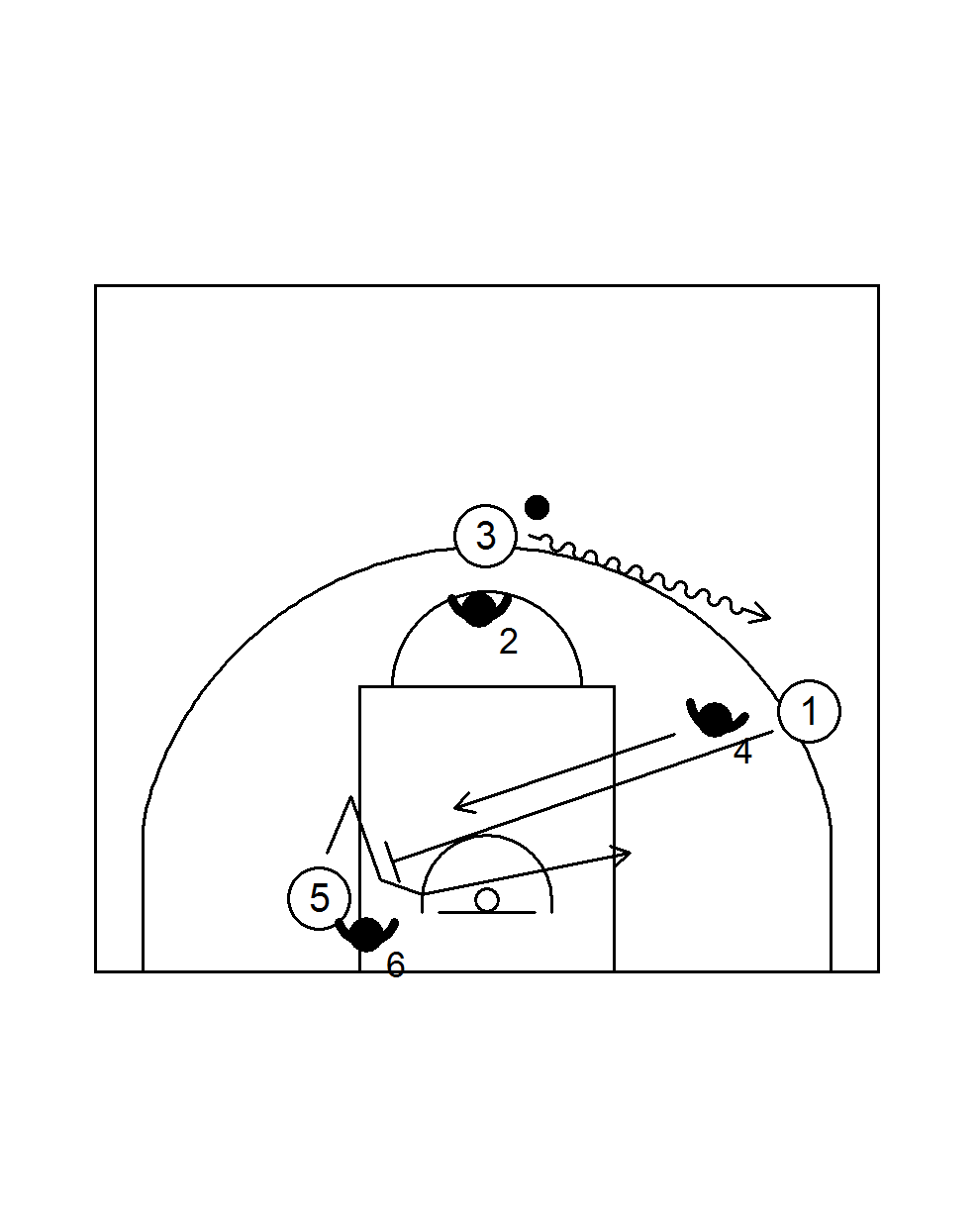
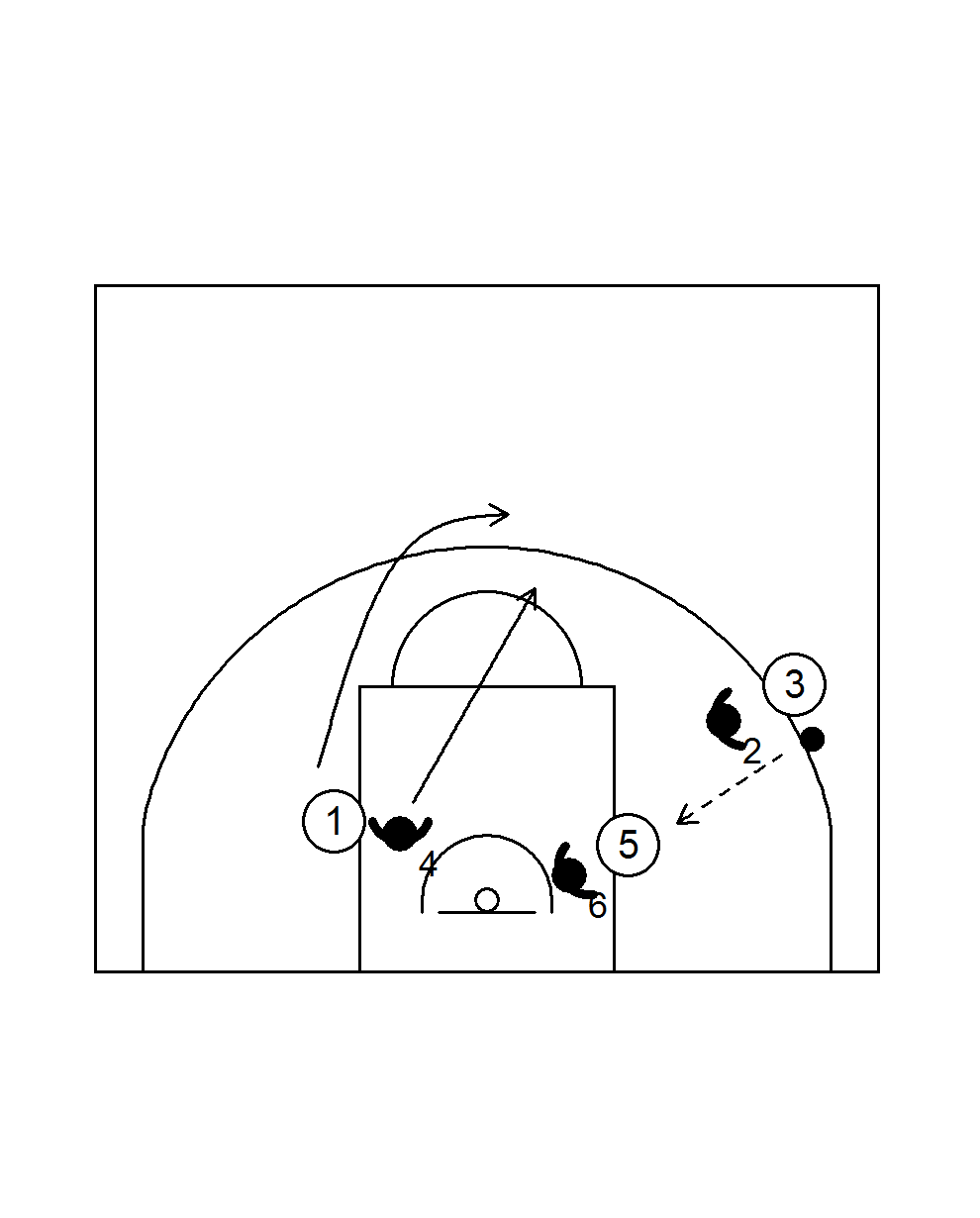
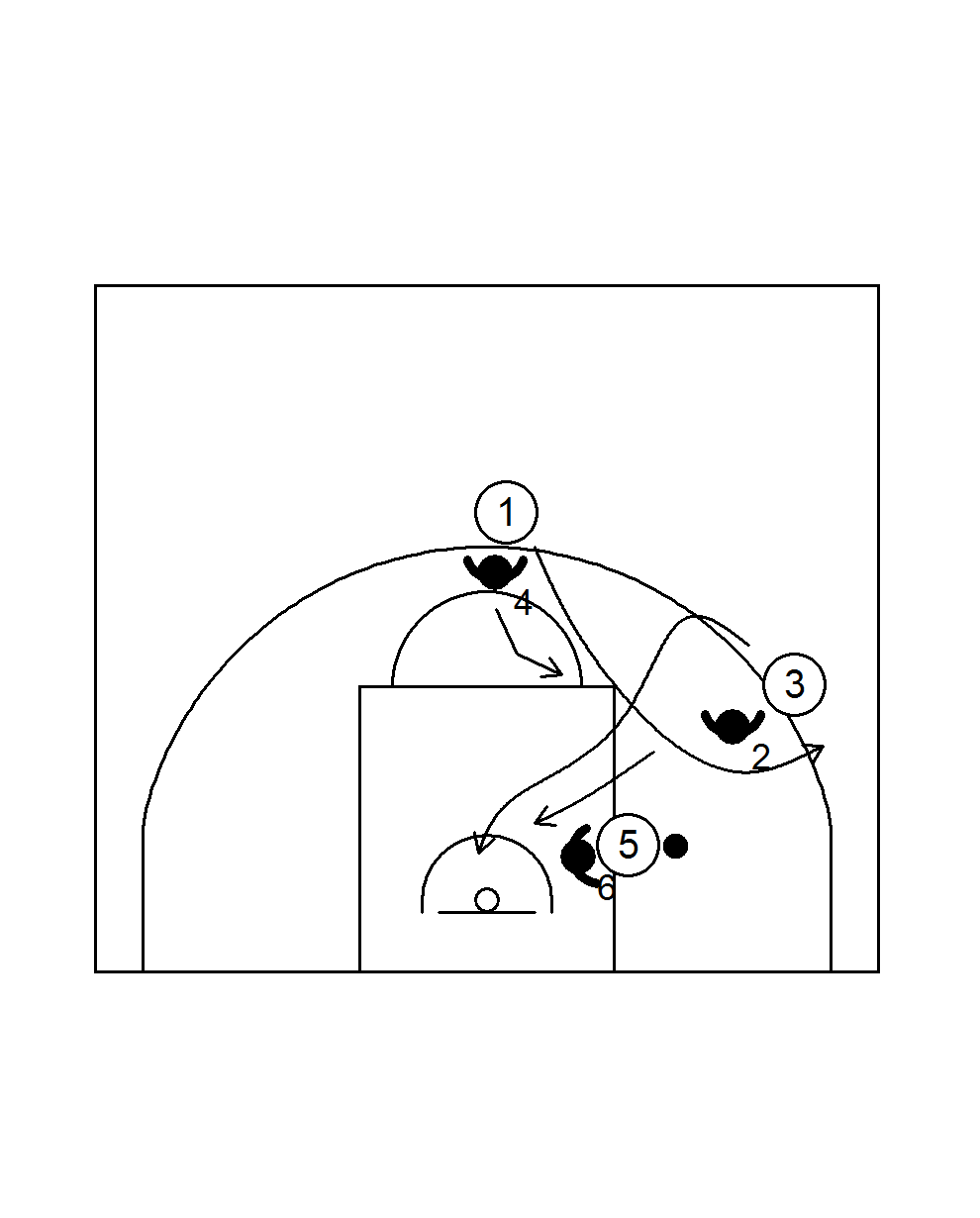
Requirements:
- players must be able to drive and shoot from the 3-point line
- forward 3 must be able to apply pass fakes to feed the post
- the centre 5 must master the fundamentals to keep his defender behind him and to be playable with a bounce pass (or with a lob when he is lost)
- the center must master the fundamentals to be able to play 1 on 1 from the block
Goal:
trainsplit
the low post
Organization:
- 5 stands extremely deep, near the bottom line
- as soon as 3 starts to dribble, 1 starts to screen for 5
- 5 crosses over to the block on the other side.
- 1 fills the guard position
- as soon as 3 has adjusted the post, he cuts across to the ring
- at the same time, 1 sprints to the corner for the shot
5 has 3 options:
1) adjust 3 for the lay up2
) adjust 1 for the shot3
) play 1 against 1 himself against 6
Teaching points:
- timing: the pass to the center must come at the moment it arrives on the block
- at the split, leave enough space for the (bounce) pass.
- 1 immediately sprints to the corner as soon as the pass is made, so that defender 4 is hindered by in cutting 3 and his defender
Variations:
- in preparation run 3 against 0 and systematically go through the various options.
- left and right
- Cut below
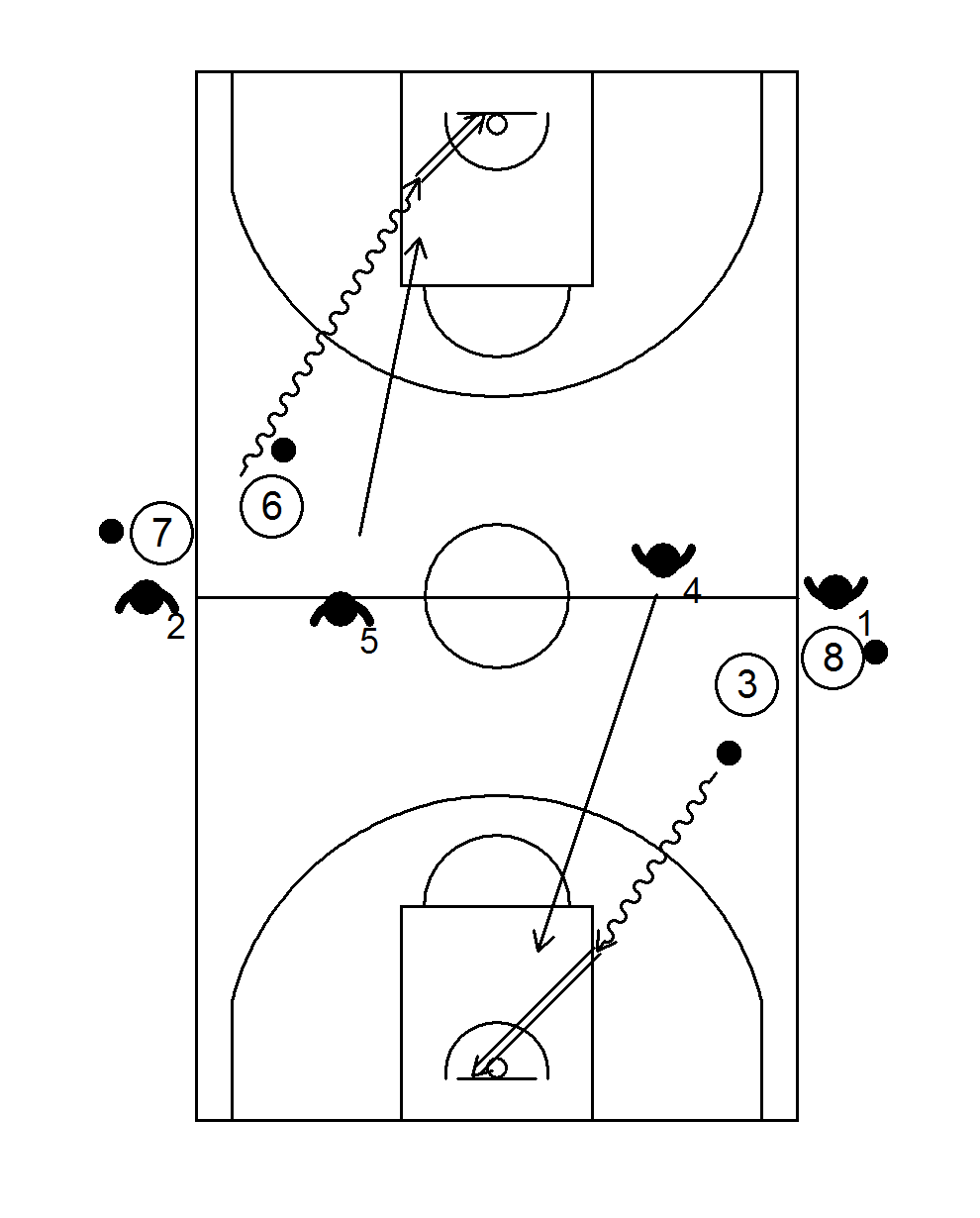
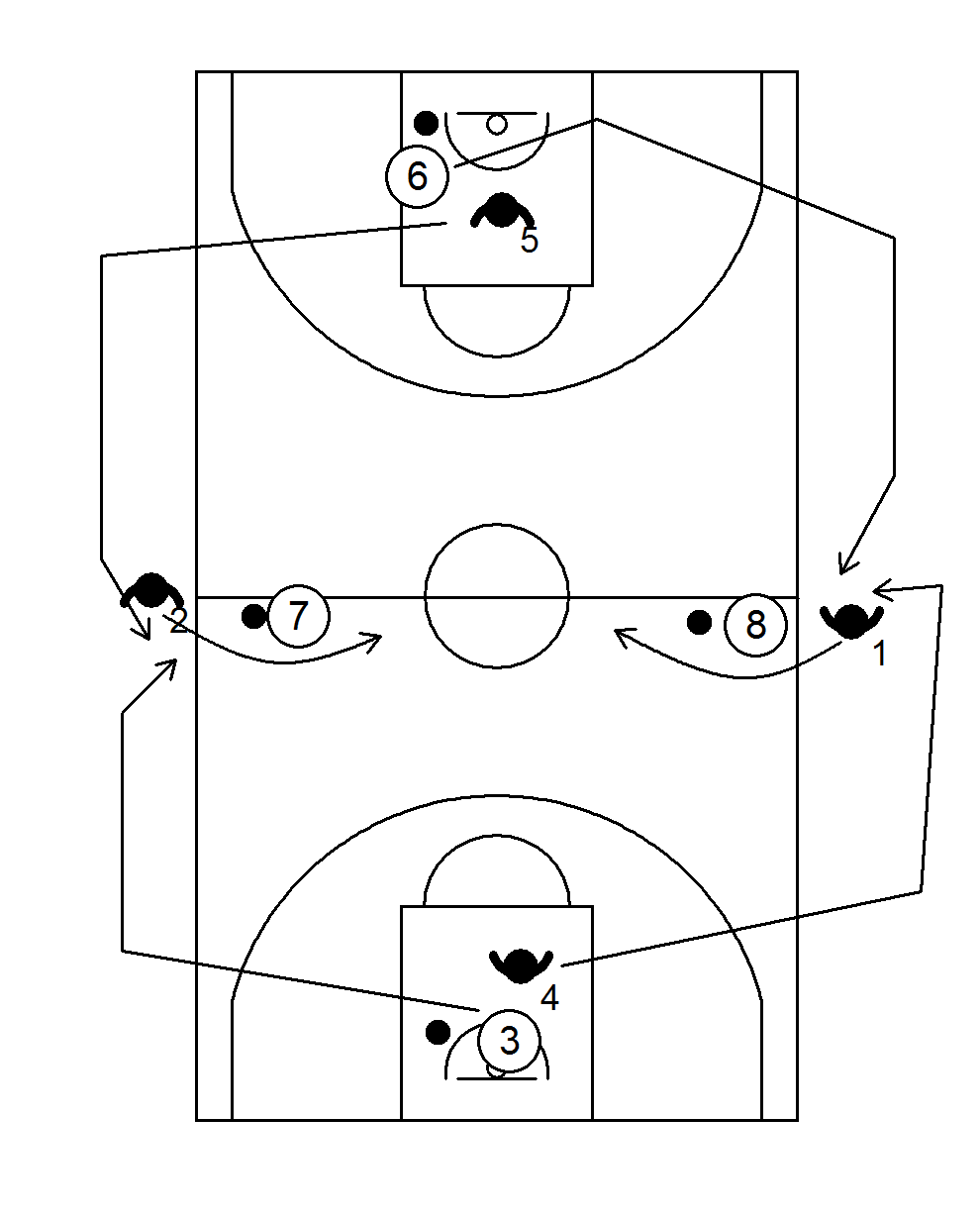
Prerequisites:
players must master the layup at full speed
Goal:
Dare to finishthe
layup under pressure of a following defender
Organisation:
- defender may only cross the half way line at the first dribble
- attacker may make feints
- if the defender steps in, he/she must put both feet behind the centre line before defending again
- Attacker dribbles as fast as possible to the basket and finishes with a layup.
- Finish with a layup
- winner takes ball and connects behind the attackers on the other half of the court
- loser defends on the same half.
- depending on the skill of the attackers, allow the defender to cover more or less distance
Teaching points:
- dribble at full speed
- do not let the oncoming defender distract you.
Variations:
- increase the pressure by having the defender start closer to the basket
- Have players start sitting or lying down. The defender can only get up after the attacker.
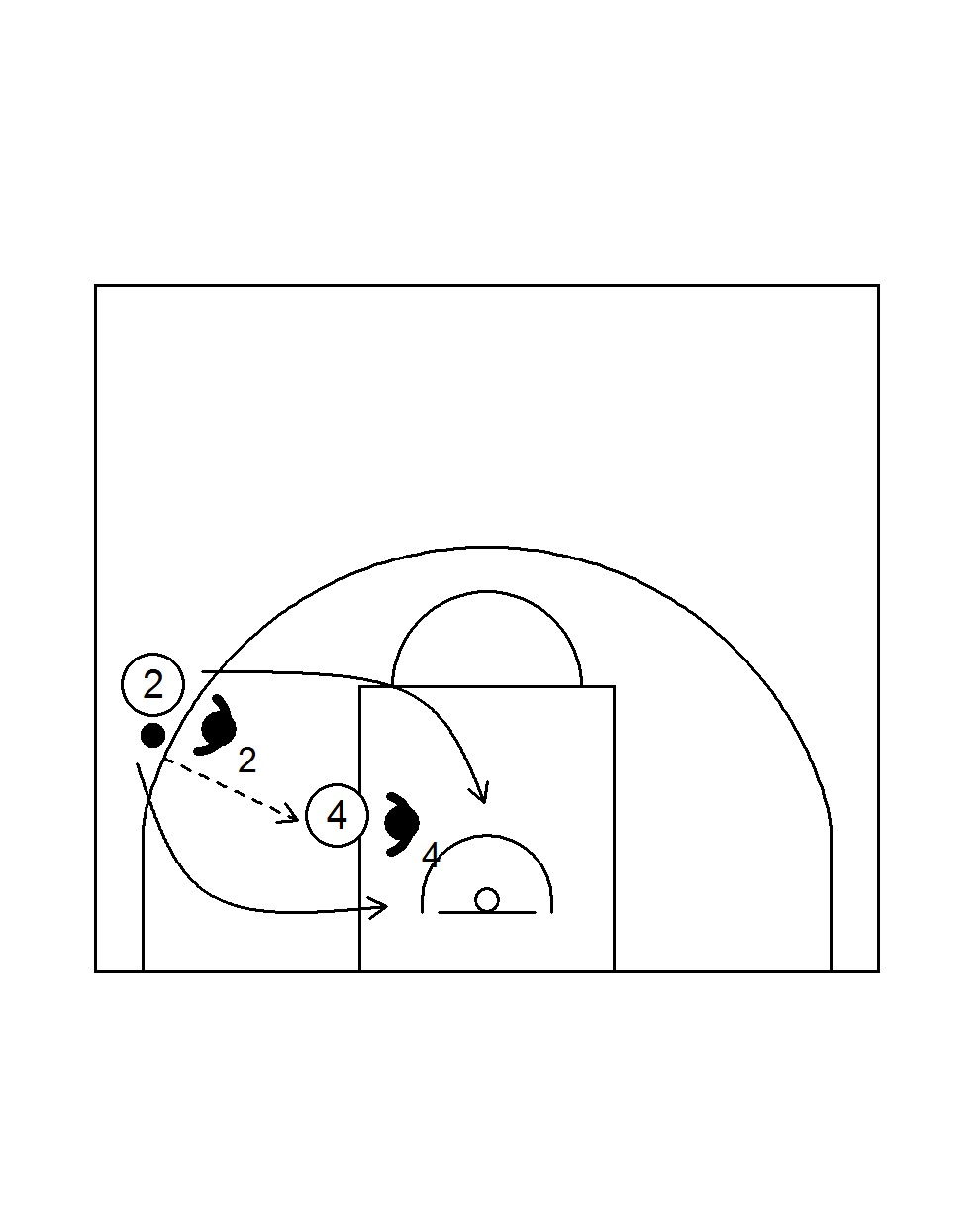
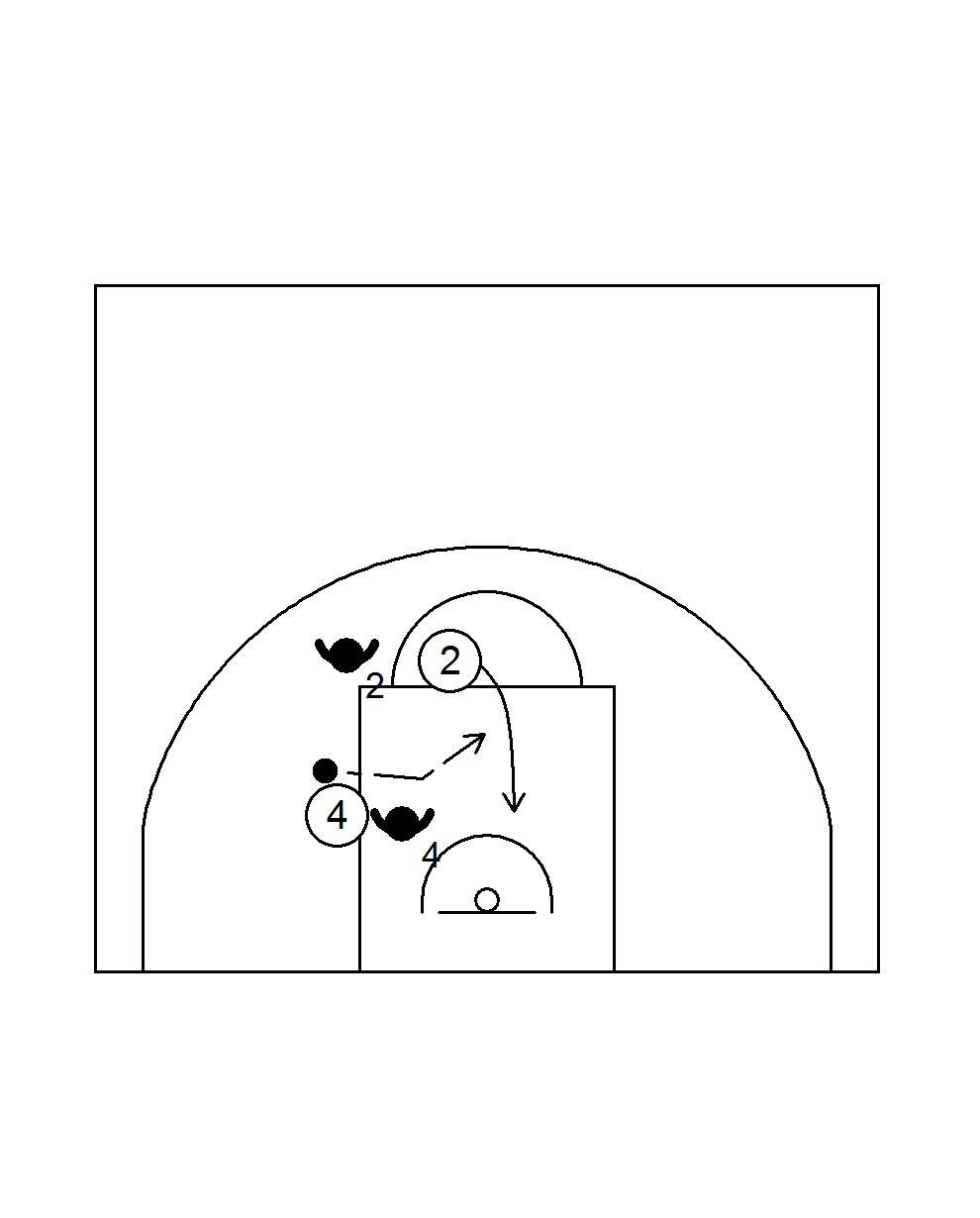
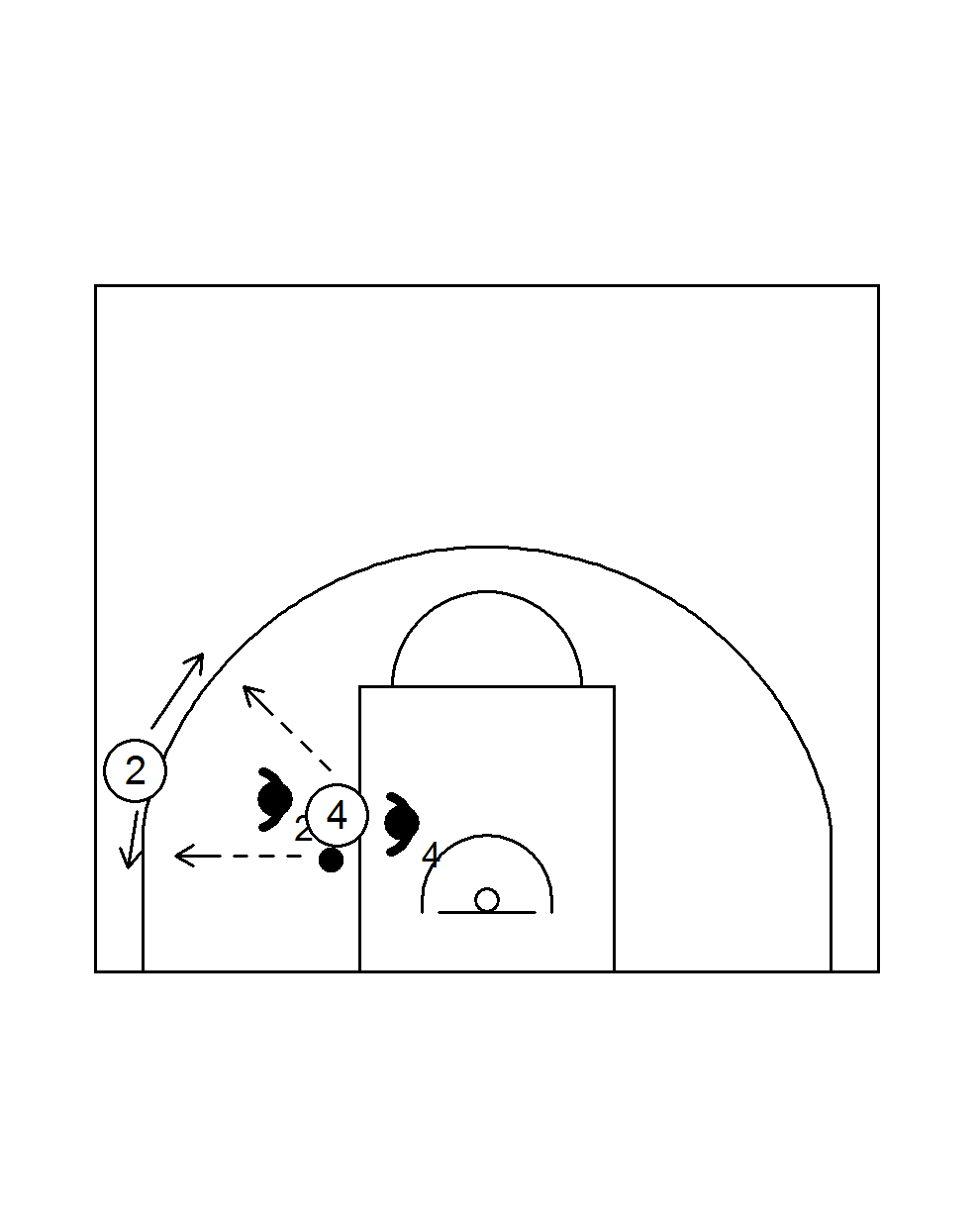
Prerequisites:
- forward must be able to play mid post (pass fakes, flat bounce pass)
- Forward must be able to make a lay up or lay back directly from a bounce pass in the run
Goal:
To teach the forward to read the defense and to choose the appropriate offensive line
Concepts:
cutter = forward who cuts in
Organisation:
- the centre is allowed only 1 dribble
- forward may only make 1 dribble after a shot fake, otherwise not allowed
- make it - take it
- play up to the 5
Teaching points cutter:
- cut with sufficient distance from the centre: over the elbow or over the dead ball line
- choose the side that leaves the defender free
- Prepare a front pass in the opposite direction and rebound hard in the desired direction
- keep your hands ready for the bounce pass
- run to the weak side for the three-point shot if you don't get the ball right away
Continued:
- centre can play 1v1
- or use it to threaten and pass for the three-pointer
- If the defender plays double down
- then the forward looks for a shooting position where the center can see him and adjust: don't stand still!
- after the pass to the outside, take the shot immediately
- or readjust the center
- and find a shot position again
Teaching points:
- speed of action: one fake and then act immediately
- watch what the defender does and take up the space he does not defend
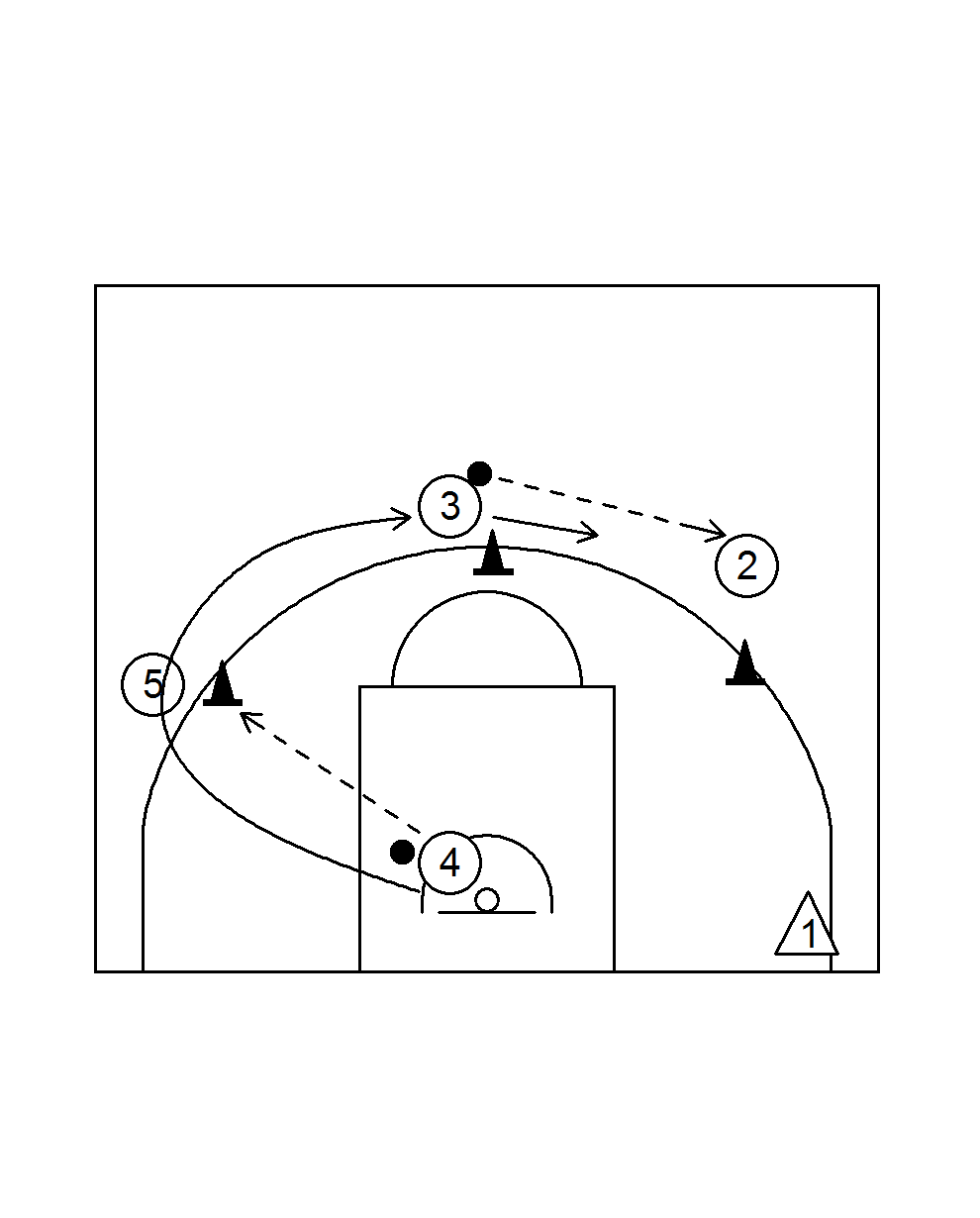
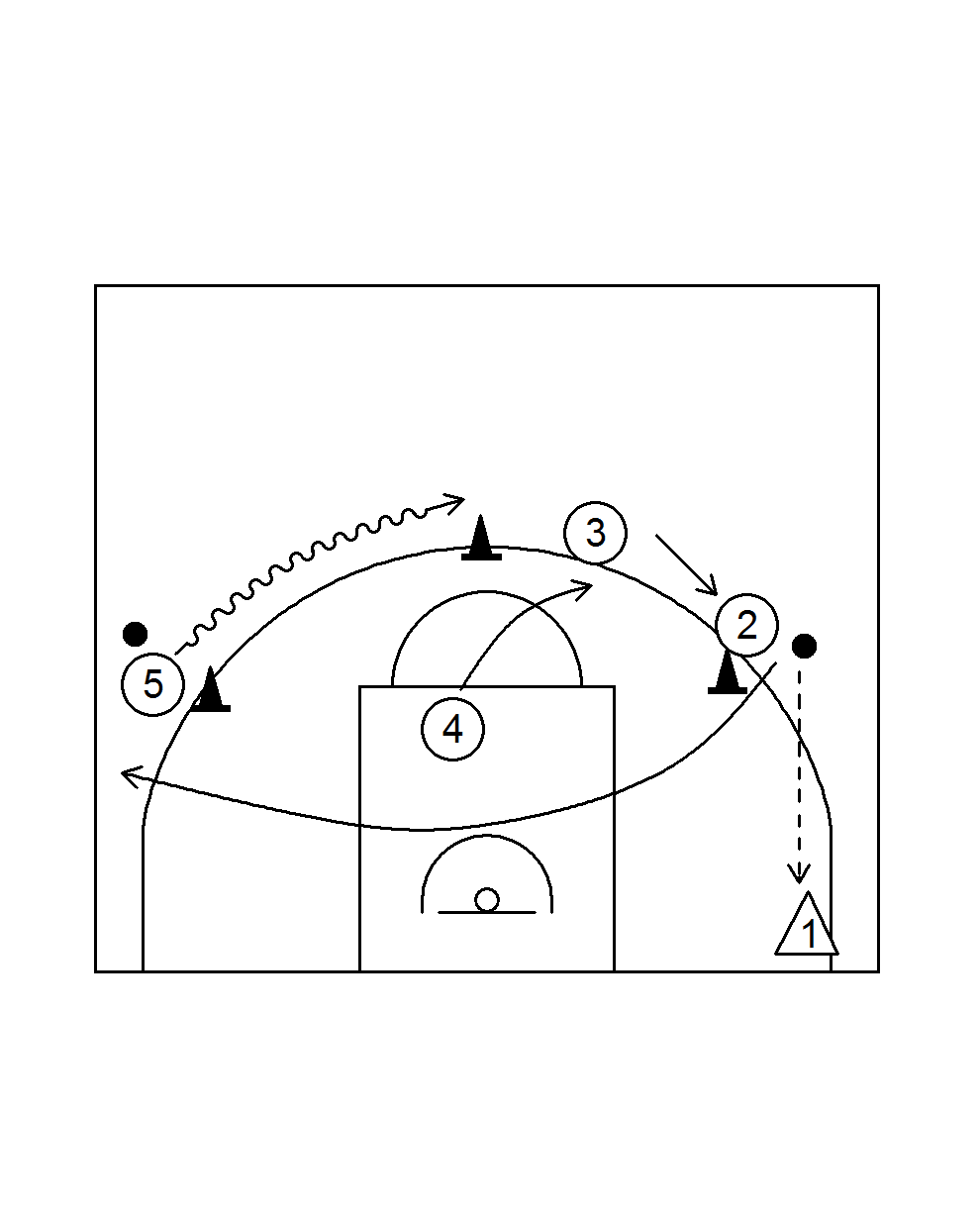
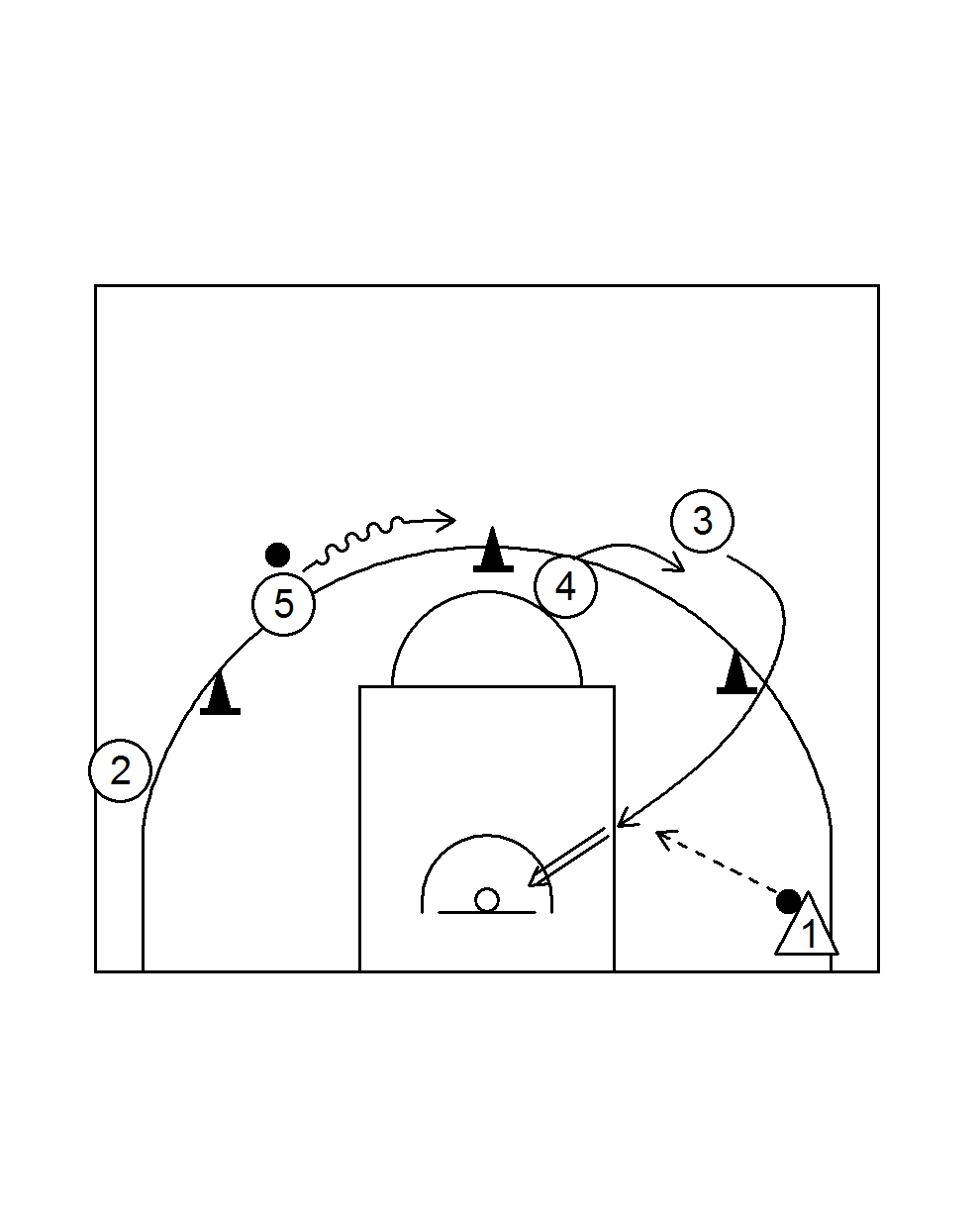
Requirements:
players must be able to make a lay up from the pass
Goal: learn the
running move to free another player + have the courage NOT to pass to the first man who moves
Organisation:
- 3 pawns
- fixed pair
- fixed passer in the corner of the field.
- adjust deep post
- cut in, ask for the ball and pass
- second incider gets the ball and makes the lay up
- catches it himself
- passes to the oulet
- and runs to the pawn on the other side of the free throw line
- in the meantime, the man with the ball dribbles to the next pawn
- passes to his regular teammate
- who passes to the regular passer in the corner
- cuts in and asks for the ball (but does not get it)
- when there are more than 10 men: make 5 free throws and then change with a fixed passer
Teaching Points:
- the first man to cut in must look at the passer and ask for the ball with his hands
- the passer must use pass fakes to keep his defender out of the pass line until the second man cuts in
Variations:
Left and right
Requirements:
- players must have the courage to shoot defensively
- master open step and crossover step
- and master a feint followed by a dribble + shot or drive
Objective:
to decide which action to take as a forward in a 1v1 situation
Organisation:
- defender passes the ball with a bounce pass to the attacker
- and starts defending
- Attacker stands within shooting distance
Teaching points:
- foot, knee and shoulder in one line
- Hands ready to shoot
- Knees in an angle of 60 degrees (shot fake) to 90 degrees (drive fake)
- Shot fake: ball not higher than the nose + bend the knees a bit
- Drive fake: short, quick step + forward movement with the shoulders
- Open step: first step is short
- Bringing the ball to the other side with sweep/rip: bring the ball below knee height
Decide:
- defender has his hands low and/or more than an arm's length away: shoot (quick draw)
- Defender has his hand on the ball: driven directly (preferably over the front foot / along the back of the defender)
- make one fake at the most. Read the defender's reaction during your fake.
- If the defender does not react, continue the move (fake shot becomes shot, fake drive becomes drive).
- if the defender reacts, take the other option, i.e.: fake shot becomes drive; fake drive becomes shot; open step becomes rip + crossover step; crossover step becomes rip + open step
- do NOT introduce an element of competition here, to prevent defenders from making hard mistakes to avoid losing
Variations:
- instruct the defender to only defend the drive hard and leave space for the shot
- defend crossover and shot, but leave open step
- defend the shot to the full
Requirements:
- players must have the courage to shoot defensively
- and control a feint + dribble + shot or drive
Goal:
practice1
against 1
Organisation:
- after a goal attempt, each player catches his own ball
- waits until his team-mate is in his shooting position.
- passes the ball and defends the attacker.
- the attacker uses the space left by the defender for a shot or drive
- or lures the defender towards him with a shot fake and then makes a drive to the basket
- OR a bounce + step + shot
- do NOT introduce an element of competition to prevent defenders from making hard fouls to avoid losing.
- Make sure the attacker gets the ball where he can actually shoot, so the defender has to consider the shot AND the drive.
Teaching points:
- Catch the ball in your shot hand (ready to shoot).
- adjust shooter well
- shooting technique
- if a player never shoots but always makes a drive, instruct the defender to only defend the drive hard and leave room for the shot
Variations:
- shot distance
- Position in relation to the basket.
Prerequisites:
players must master the layup at full speed
Goal:
daring to finishthe
layup under pressure of an approaching defender
Organisation:
- set up pilons for positioning
- passer (1) plays the attacker (5) with a baseball pass and starts defending
- the attacker dribbles as fast as possible to the basket and finishes with a layup.
- finishes with layup
- loser takes the ball and joins the passers.
- winner connects with the attackers
- depending on the skill of the attackers, move the pylons to allow the defender to cover more or less distance.
Teaching points:
- dribble at full speed
- do not get distracted by the oncoming defender
Variations:
- increase pressure by having the defender start closer to the basket
- Put hoops down and let players start with their back foot in the hoop.
- Have the defender start at the three-point line and instruct him to stand for the charge. The attacker must then change direction at full speed to avoid the charge and still score.








